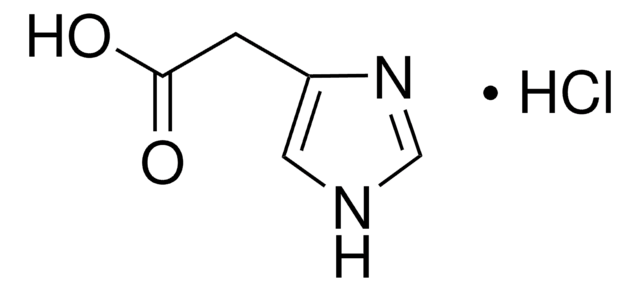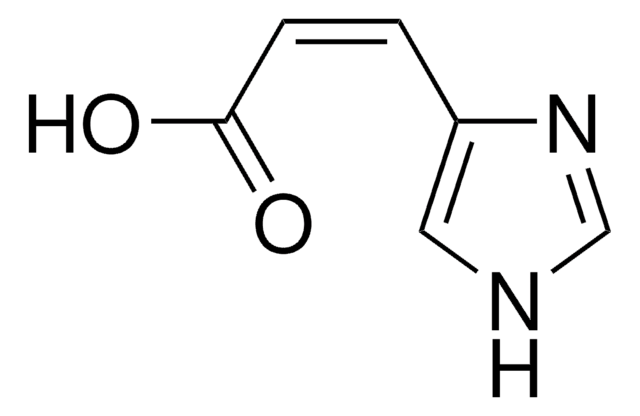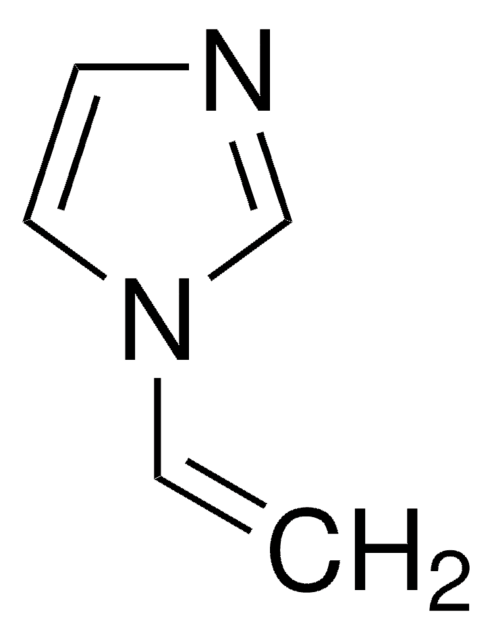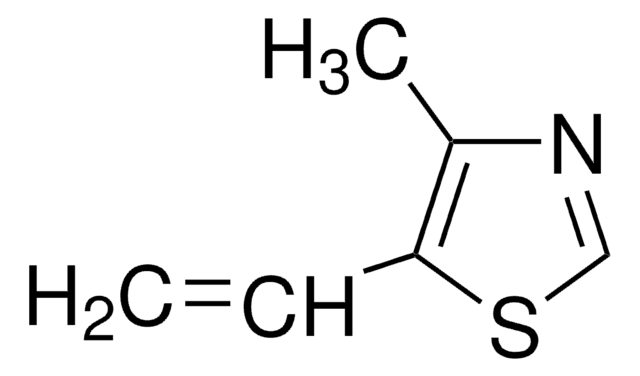859796
4-Imidazoleacrylic acid
99%
Synonym(s):
3-(4-Imidazolyl)acrylic acid, Urocanic acid
Sign Into View Organizational & Contract Pricing
All Photos(5)
About This Item
Empirical Formula (Hill Notation):
C6H6N2O2
CAS Number:
Molecular Weight:
138.12
Beilstein/REAXYS Number:
81405
EC Number:
MDL number:
UNSPSC Code:
12352005
PubChem Substance ID:
NACRES:
NA.22
Recommended Products
biological source
synthetic
assay
99%
form
powder
mp
226-228 °C (lit.)
SMILES string
OC(=O)\C=C\c1c[nH]cn1
InChI
1S/C6H6N2O2/c9-6(10)2-1-5-3-7-4-8-5/h1-4H,(H,7,8)(H,9,10)/b2-1+
InChI key
LOIYMIARKYCTBW-OWOJBTEDSA-N
Looking for similar products? Visit Product Comparison Guide
General description
4-Imidazoleacrylic acid also known as urocanic acid is a natural metabolite derived from histidine. It is majorly used as a UV chromophore with a strong absorption spectrum in the UV-B region in the range of 300-280 nm.
Application
4-Imidazoleacrylic acid can be used as a precursor for the synthesis of (±)-homohistidine, urocanic acid-modified chitosan, and N1-aryl(heteroaryl)alkyl-N2-[3-(1H-imidazol-4-yl)propyl]guanidines,.
Storage Class
11 - Combustible Solids
wgk_germany
WGK 3
flash_point_f
Not applicable
flash_point_c
Not applicable
ppe
Eyeshields, Gloves, type N95 (US)
Choose from one of the most recent versions:
Already Own This Product?
Find documentation for the products that you have recently purchased in the Document Library.
Customers Also Viewed
Lisa Eisenbeiss et al.
The Analyst, 145(20), 6586-6599 (2020-08-14)
Hair analysis has become an integral part in forensic toxicological laboratories for e.g. assessment of drug or alcohol abstinence. However, hair samples can be manipulated by cosmetic treatments, altering drug concentrations which eventually leads to false negative hair test results.
A theoretical study of the low-lying excited states of trans-and cis-urocanic acid
Page CS, et al.
The Journal of Physical Chemistry A, 103(48), 9864-9871 (1999)
Efficient gene delivery by urocanic acid-modified chitosan
Kim TH, et al.
Journal of Controlled Release : Official Journal of the Controlled Release Society, 93(3), 389-402 (2003)
Acylguanidines as bioisosteres of guanidines: N G-acylated imidazolylpropylguanidines, a new class of histamine H2 receptor agonists
Ghorai P, et al.
Journal of Medicinal Chemistry, 51(22), 7193-7204 (2008)
Harm C Arentsen et al.
The Journal of urology, 187(4), 1445-1449 (2012-02-22)
We determined the effect of protodynamic therapy against bladder cancer cells in vitro and in vivo. We investigated cis-urocanic acid in rat bladder cancer cell cultures and in an orthotopic rat urothelial carcinoma model to assess its safety and antiproliferative
Our team of scientists has experience in all areas of research including Life Science, Material Science, Chemical Synthesis, Chromatography, Analytical and many others.
Contact Technical Service










